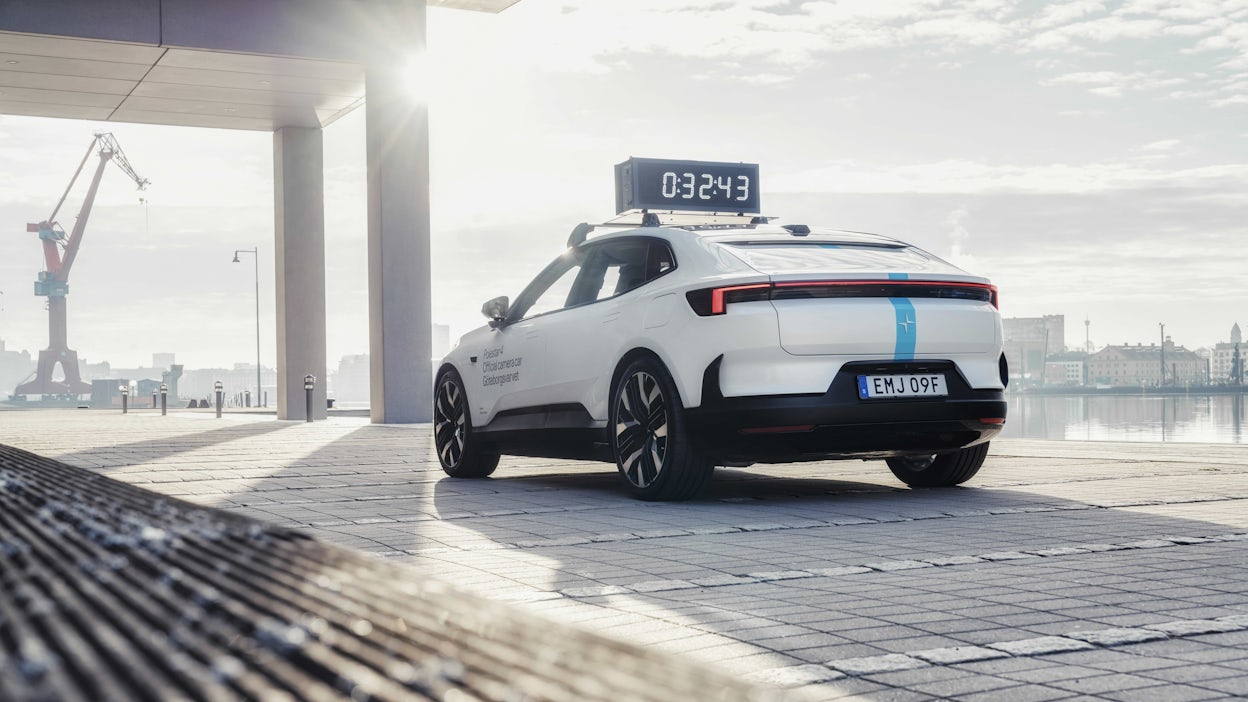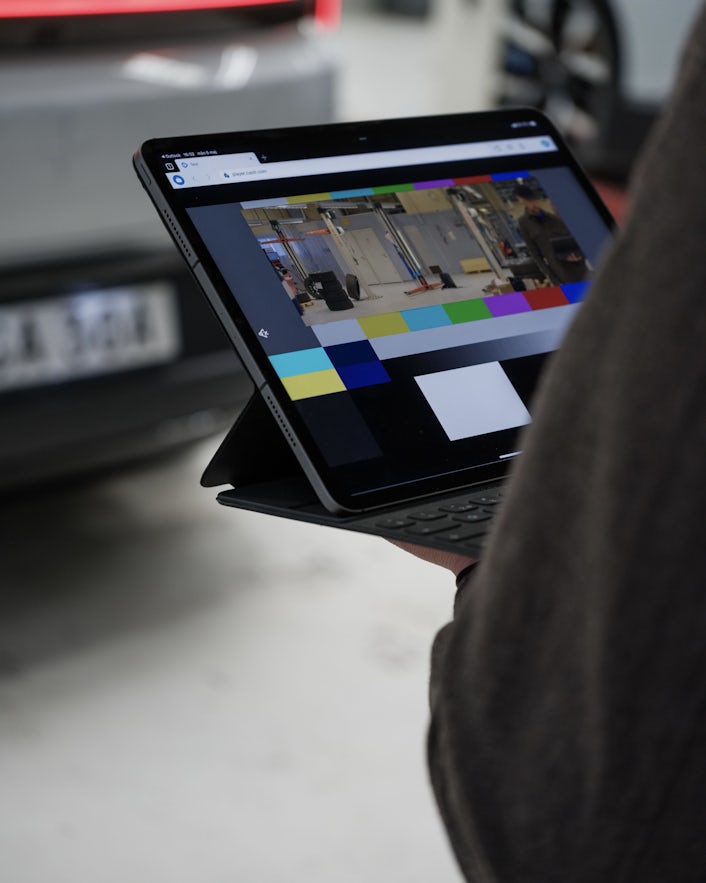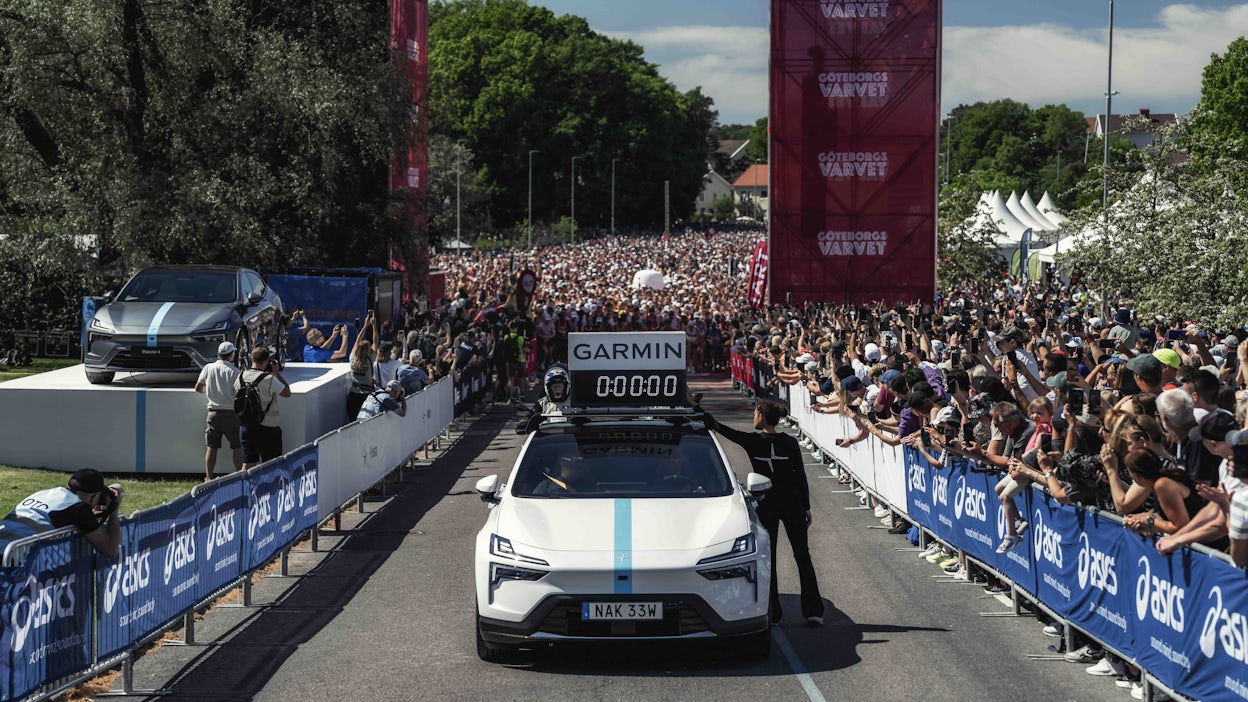Filming a half marathon using a Polestar 4 rear-facing camera
The bond between camera and athelete is indisputable. From diminutive Argentinians tiptoeing around English ankles to enigmatic prize fighters looming large over felled champions, sporting moments are made immortal thanks to the humble lens. Last week, Polestar added another chapter to this storied relationship.
"I've worked all over the world, and I've never heard about this before," Anders Yttergård told us in the days before one of the biggest events on his calendar. "To use a car like this for a TV production has never been done." As one of Sweden's leading TV sports directors, Anders is something of an authority on the power of live television, having covered everything from the Rio Olympic Games to the Asian Winter games in Kazakhstan.
One glance at the 42-year-olds' travel plans, and you begin to understand that demand for live sports is everywhere. One glance at the TV guide, and you begin to understand why. Today, live sports dominate our screens. Our favourite team, player, or event are never more than a stable Wi-Fi connection away, offering escapism and excitement to an audience of billions around the world. But a little under 100 years ago, the sporting landscape was a much smaller place.

World's first sporting broadcast
To fully understand the relationship between sport and television, we must first turn the clock back to 1931, when 25 horses hurtled around an ancient racecourse at one of England's most prestigious sporting events: the Derby.
It was here — amidst the hooves and mud — that a sporting event was broadcast live to the public for the first time. Despite the rudimentary equipment and the grainy black-and-white images they produced, both broadcaster and viewer were hooked by the spectacle of witnessing real-time sporting history.
Since then, global audiences have feasted on a smorgasbord of ball-hitting, dart-throwing, pole-jumping, car-racing (and everything in between). But has a live broadcast feed ever come directly from a car's rear-facing camera? Probably not. Well, at least not until earlier this month.


How to film a marathon
Göteborgsvarvet, Gothenburg's annual half marathon, is one of the largest running events in the world. Regularly attracting over 60,000 entrants yearly, it is a colourful festival of human endurance and a centrepiece of the city's cultural calendar. Its races range from a miniature 250-meter dash for kids under six to the classic 21-kilometre race, open to anyone and everyone but inevitably won by top-tier elite professionals. It's an event as much loved by the locals lining the streets as it is by the racers pounding away on the tarmac.
As the race winds its way through the serene streets of Sweden's second-largest city, participants and spectators are treated to a mixture of old and new, with the city's rapidly expanding modern waterfront beginning to slowly dwarf the old edifices of cranes and steel — remnants of the city's history as a ship-builder and trading hub.
This year, however, was a little different. With Polestar 4 acting as marathon lead car, we witnessed a world-first in live television broadcasting.
A partnership between Swedish production company New Century Production and advanced technology supplier Gentex turned a Polestar 4 into a specially commissioned marathon lead car capable of beaming a live HD feed directly onto the screens of viewers around the world. By using the vehicle's unique rear-facing camera (and a couple of special transmitters and microphones), a global audience was treated to a never-before-seen view of the action.
“The Polestar 4 is first to use our second generation camera for the digital rear view mirror system, and this event is a perfect way to showcase the new technology. The video signal for the broadcast comes from the rear-facing camera on the car. We have installed a special signal converter solution in the car for this event to be able to capture and distribute the video feed to the broadcast team for streaming via 5G,” says Joakim Söderström at Gentex in Sweden.

It's super special to create an atmosphere and spread happiness
"This is the fifth year we've partnered with Göteborgsvarvet. It's still one of the most enjoyable and important days on our calendar," says Nils Rylėn, Head of Marketing for Polestar in Sweden. "In all partnerships, we aim to activate our focus areas: design, innovation and sustainability. This year, we combined all three by being product-focused and highlighting the rear-facing camera. It's such a recognisable feature on the Polestar 4, and we're happy we got to show off its capabilities during this year's live broadcast. But I hope this isn't a one-off. We're in the process of exploring other opportunities for the camera to be used in unique ways."
It's a sentiment echoed by Anders, "It's super special to try and create an atmosphere and to do it in such a way that you spread happiness a little bit. A lot of people who are alone feel that their TV is their best friend. Maybe we can do something for them as well."








